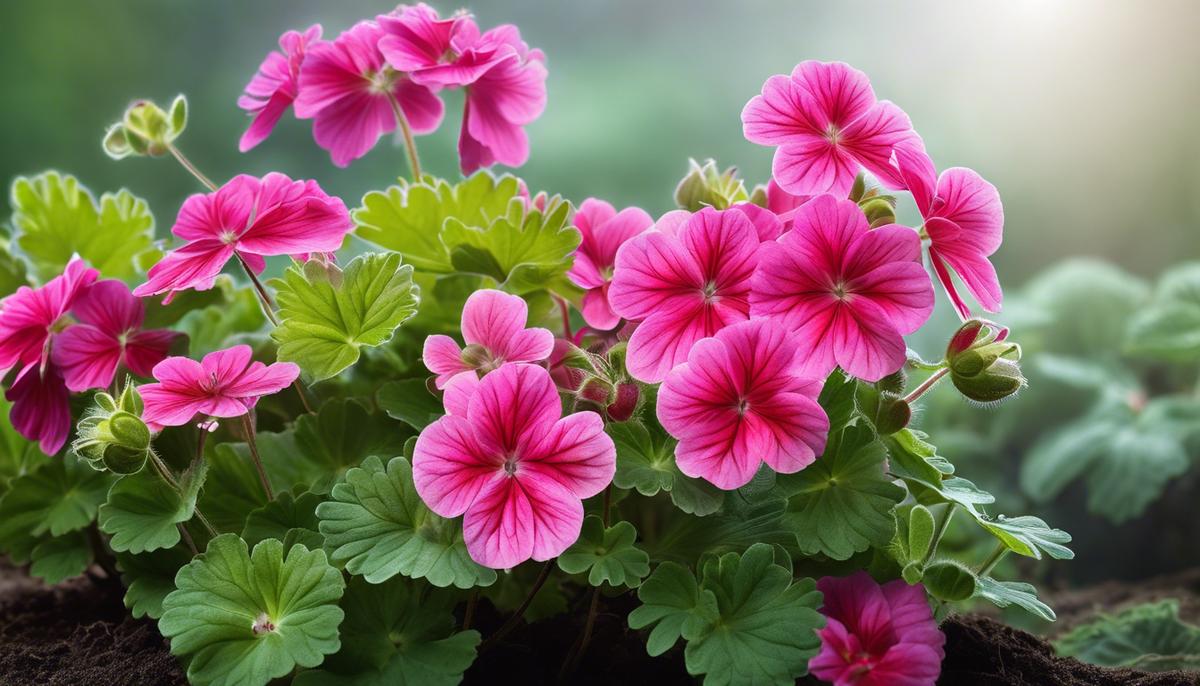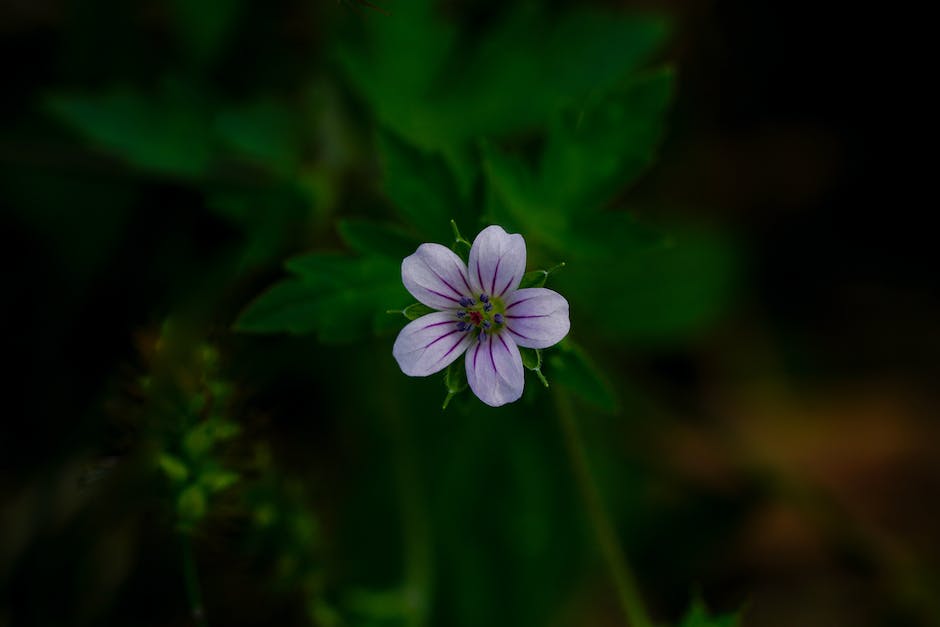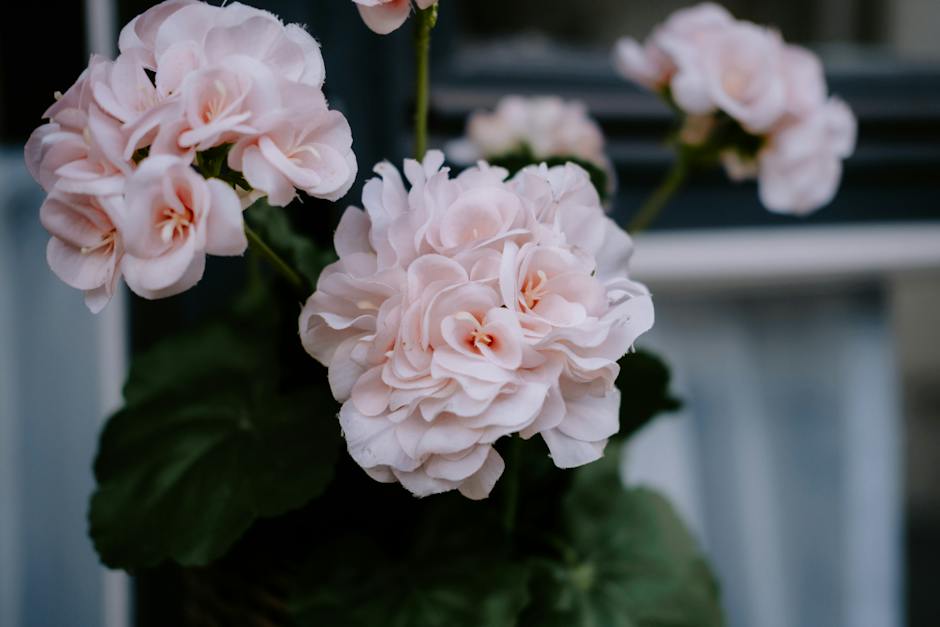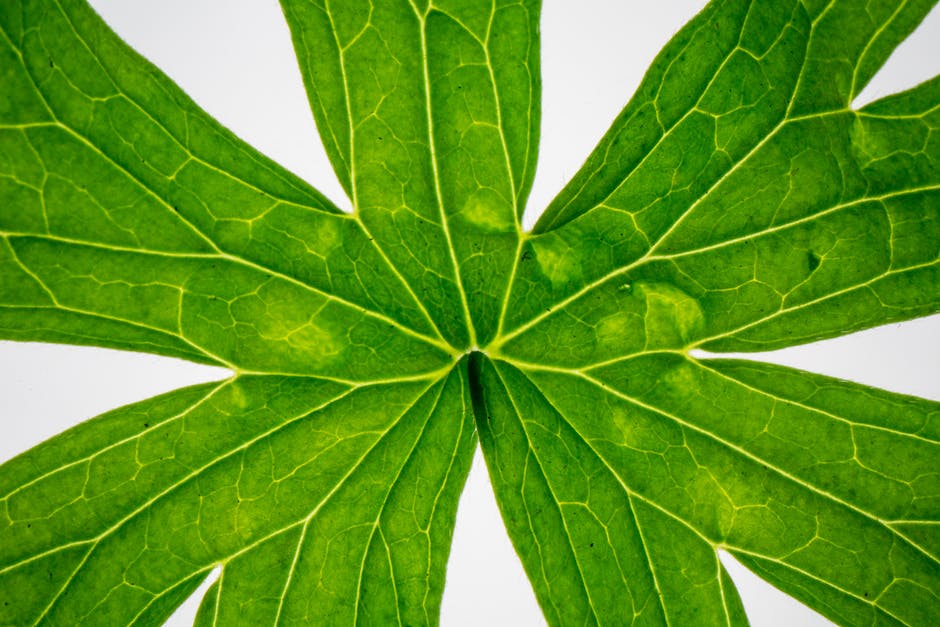Resolving Yellow Leaves on Geraniums

Geraniums, with their vibrant blossoms and lush foliage, often serve as the centerpiece of many gardens and home interiors. However, maintaining their health can sometimes be a challenge, especially when signs of distress – such as yellowing leaves – start to appear. In this discussion, we’ll delve into the vital aspects of geranium health, familiarize ourselves with the tell-tale signs of a thriving plant and, conversely, identify the warning signs that something might be amiss. Furthermore, we will investigate the usual culprits of yellowing leaves in geranium plants, ranging from substandard care practices to unregulated environmental factors and potential plant diseases. From there, armed with the knowledge and understanding of root causes, we will walk through the array of corrective measures designed to revive your geraniums to their former glory.
Understanding Geranium Plant Health
The Geranium Guru’s Guide: How to Assess the Overall Health of Your Geranium Plant
There’s nothing quite like the mild, sweet fragrance and striking colors of geraniums filling your garden or balcony. These perennial favorites, often celebrated for their voluminous blooms and robust nature, can spice up any dull corner. Nonetheless, like any plant, geraniums thrive best with a little tender, loving care. Every plant has its own distinct way of telling us about its well-being and geraniums are no different. Want to ensure your geraniums are at their leafy best? Here’s a simple, straightforward guide on the tell-tale signs of a healthy geranium plant.
- Leaf Color and Condition
- Notice the Flowering Patterns
- Check the Stem
- Root Health is Paramount
- Keep an Eye on Pest Infestations
The first and most crucial aspect to look for is the leaf conditions. Vibrant green leaves at all times of the year hint at a robust geranium. Browning or yellowing leaves suggest a problem and might be due to overwatering, overfeeding, or a lack of sunlight. Tiny yellow spots may imply a viral infection, so always be on the lookout for any change in your geranium’s leaf color or texture!
Generous flowering is the quintessential sign of a healthy geranium. From spring to fall, your geranium should be boasting an array of colorful flowers. It’s important that the blossoms are vibrant and full. If your geranium isn’t blooming as much as expected or if the flowers look feeble or faded, it might be indicating a lack of nutrients or inappropriate lighting conditions. Remember, healthy geraniums should have multiple clusters of flowers!
A healthy geranium typically has thick and sturdy stems signifying strength. If the stems start to seem limp or weak, it might indicate a lack of sunlight, overwatering, or even root rot. In such cases, it’s recommended to revisit the watering and lighting schedules, ensuring they fit the plant’s needs perfectly.
Healthy roots are always a good sign for any plant. Although not always visible, if the roots seem dense, whitish, and robust when you change the pot, the geranium is in good health. Conversely, blackened and soggy roots are a common symptom of overwatering.
Last but not least, regularly checking your geranium plant for pests can’t be stressed enough. A healthy plant is often free of pests and disease. Look out for leaf discolorations, spots or holes, which might indicate an infestation.
Remember, whether it’s unusual leaf color, weak stems, or reduced blooming, your geranium is constantly communicating with you. It’s about decoding the signs right and providing the best care possible. The process may seem intricate but the joy of seeing a thriving geranium bloom, offers a satisfaction that is immeasurable and well worth it. Tune in and listen, because your geranium has a lot to tell you! Happy gardening!

Identifying Causes of Yellow Leaves
Unlocking the Mystery: Reasons Why Geranium Leaves Turn Yellow
What a colorful world it would be if all our geraniums stayed as vibrant and green as they should be, right? Yet, nature often has its way of reminding us there might be an underlying issue in our care that we need to address. One common signal is the rather unsightly yellowing of geranium leaves. Understanding why it happens is paramount for any hobbyist. So, strap in for a plant detective journey of discovery!
First and foremost, it’s crucial to note that inadequate watering practices could be playing a significant role when leaves start donning this sickly shade of yellow. Watering a geranium too much or too sparingly can cause stress, leading to yellowing leaves. Defining the ideal watering routine is not always straightforward, as it depends on factors like temperature, humidity, and light exposure. So, vigilance is key, checking the soil moisture before watering.
Onto the next possible culprit – nutrient deficiency. Geraniums require a mix of macro and micronutrients to thrive. Mainly, a lack of magnesium or nitrogen can lead to yellow leaves. Regular feeding with a well-balanced fertilizer gives them the required boost. However, avoid over-fertilization; too much of a good thing might have adverse effects.
Ever wondered about the pH levels of your soil? If not, it’s time to consider this aspect. Geraniums prefer slightly acidic to neutral soil – pH between 6.0 and 7.0. When the soil becomes too acidic or alkaline, nutrient absorption becomes troublesome, causing your plants to show discomfort via their leaves becoming yellow.
Additionally, temperature fluctuations can cause your geranium leaves to yell. Being native to South Africa, geraniums prefer warmth and are not cut-out for excessive cold. Keeping them at a stable temperature – ideally, between 65°F and 75°F in the day and a few degrees lower at night – helps maintain their vibrant leaf color.
Lastlly, did someone mention diseases? Because geraniums aren’t immune. Fungal and bacterial diseases, like leaf spot and rusty, can cause your precious leaves to turn yellow. Swiftly removing any infected leaves and maintaining good ventilation to discourage pathogen growth are good preventative measures.
Essentially, the yellowing of geranium leaves is a cry for help, a vivid signal to adjust your care routine. Heed the call – be it tweaking watering habits, supplementing nutrients, adjusting the soil pH, maintaining optimal temperature, or warding off diseases. Catch these changes early, and you’ll soon have your geraniums back to their lush, green selves soon – a rewarding sight for those willing to learn and adapt. Cheers to healthy and lush geraniums!

Implementing Corrective Measures for Yellow Leaves
Transforming the appearance of your yellowing geranium leaves and preventing such discoloration may pose a challenge for hobbyist gardeners and botany enthusiasts. However, once you delve deeper into the causes and solutions, you’ll find that you have the power to restore the vibrancy of these beautiful plants. Let’s take a closer look at some of the lesser-known factors and tips that can lend a hand in this process.
Surprisingly enough, one culprit that might contribute to the yellowing of geranium leaves is excessive sunlight. Counteracting this issue can be as simple as repositioning your plants to a place with dappled sunlight or providing them with some shade, especially during midday when the sun is at its peak.
Still, even after resolving the light issue, overcoming the yellowing problem might require you to step up your geranium care game. To do so, carefully consider the nature of your watering routine. Always ensure the soil is kept moderately moist but never waterlogged. Remember, overwatering often leads to root rot, which is another cause of yellowing leaves in geraniums.
In terms of nutrient provision, supplementing your plants with a balanced, slow-release fertilizer is a crucial step. Nitrogen, Phosphorous, and Potassium (or NPK) are the three primary nutrients that plants need for optimal growth. A fertilizer with an equal ratio of these nutrients, like a 10-10-10, would be perfect for geraniums. Supplement this nutrient mix with Epsom Salt, which is high in magnesium, and your geraniums should perk up in no time.
Building and maintaining healthy soil around your geraniums can play a major role in leaf color. While geraniums are capable of thriving in a somewhat wide pH range (5.8 to 6.5), they generally prefer slightly acidic to neutral soil. You can test and alter the pH of your soil using a soil testing kit and additives like limestone or sulfur.
Additionally, maintaining a consistent temperature between 65-70°F during the daytime and 55°F at night will serve your geraniums well. This condition mirrors their natural Mediterranean habitat, fostering healthy growth and preventing leaf yellowing.
It’s important to keep an eye out for pests and diseases. Regularly inspect your geraniums for unwanted visitors like aphids or red spider mites, and practice preventative measures like properly spacing your plants, and regular cleaning.
Last but not least, to prevent fungal and bacterial diseases, it’s vital to ensure appropriate air circulation around your geraniums. This helps keep humidity levels in check, which in turn curbs the growth of harmful fungus and bacteria.
Keep this information in your knowledge arsenal, and watch your geraniums flourish, free from the stress of yellowing leaves. Happy gardening!

Germinating, growing, and caring for geraniums puts us in a position where we constantly need to observe, understand, and adapt for the welfare of these beautiful plants. When faced with the alarming sight of yellowing geranium leaves, the steps laid out here should equip you with the know-how to identify potential issues and address them effectively. Through adjustments in watering habits, optimizing nutrient availability, regulating light exposure, and managing potential diseases, it is entirely possible to restore your geraniums to healthy, flourishing plants. Remember, the journey towards a healthy geranium goes beyond mere plant care; it’s understanding the subtle language of plants and responding accordingly to ensure their well-being.



